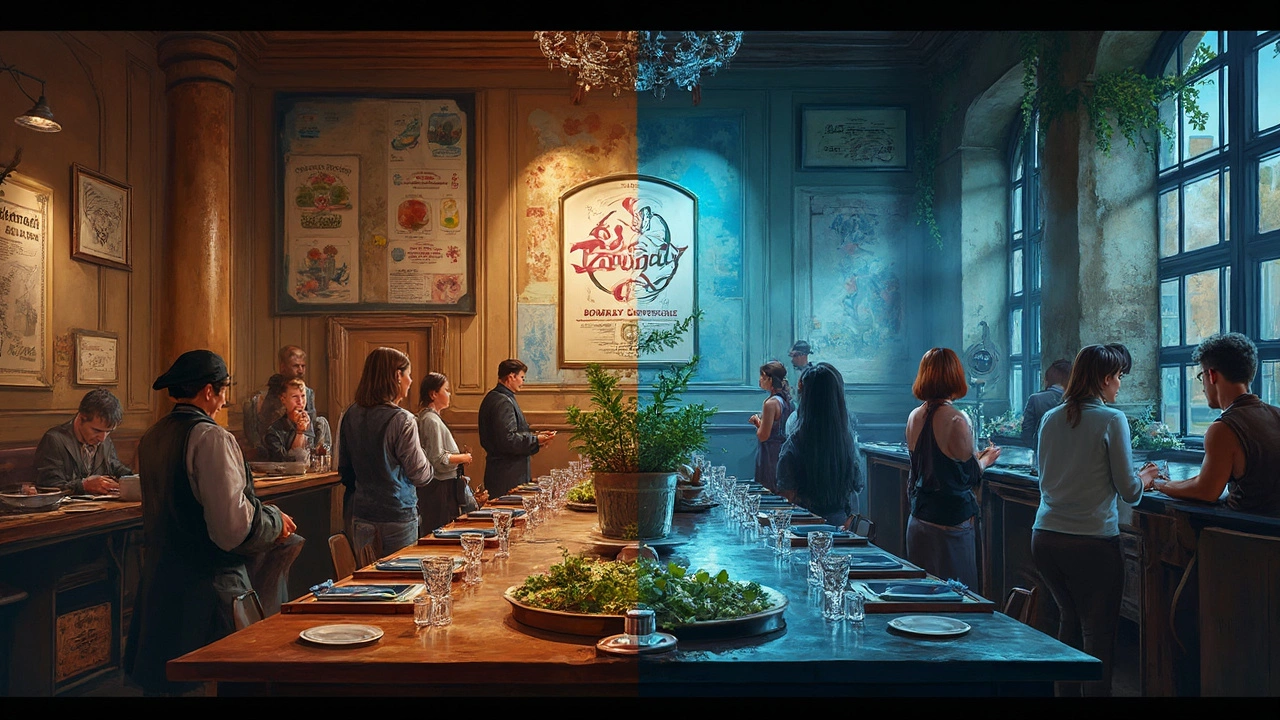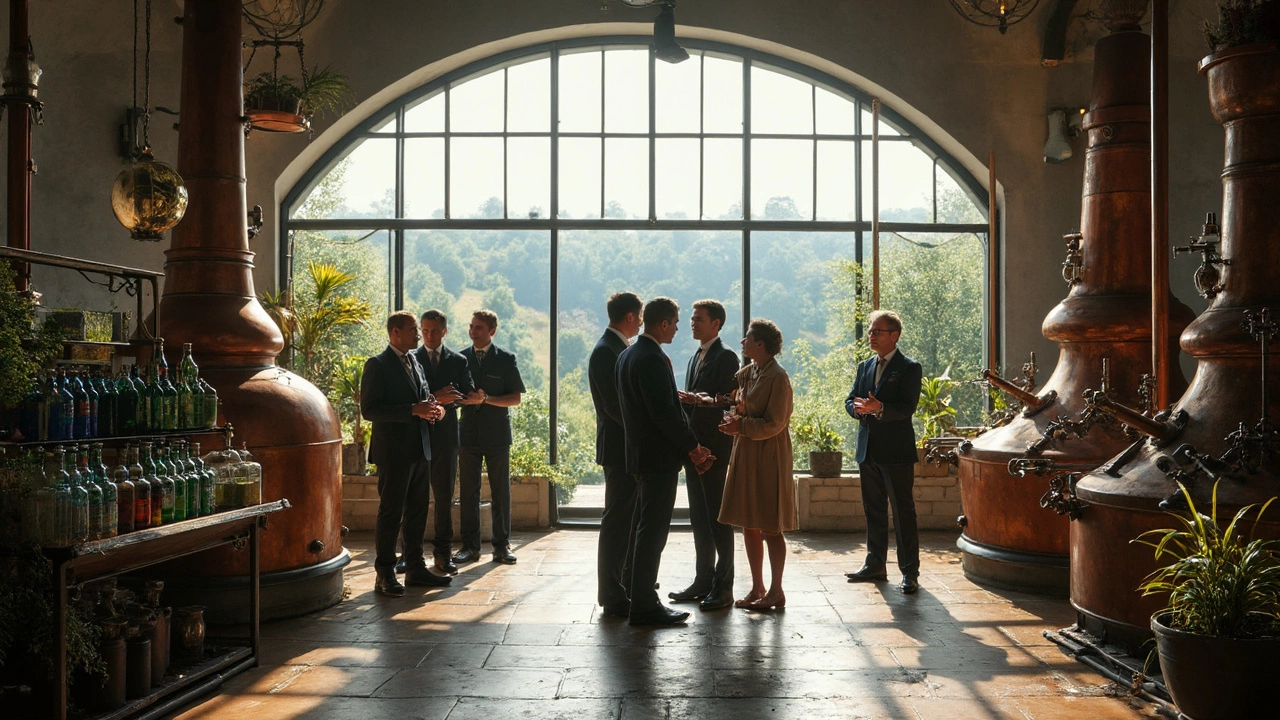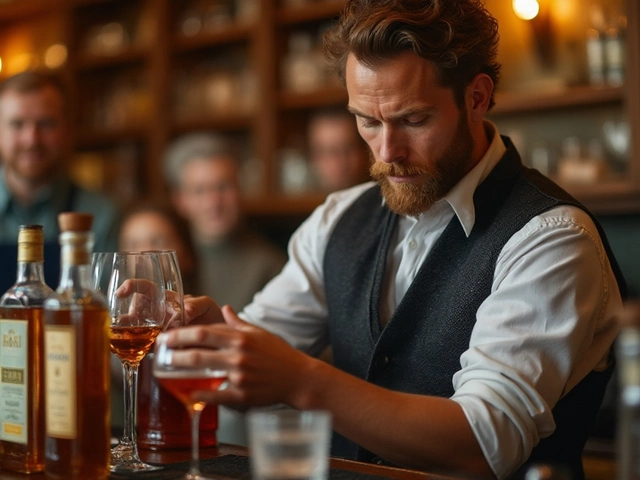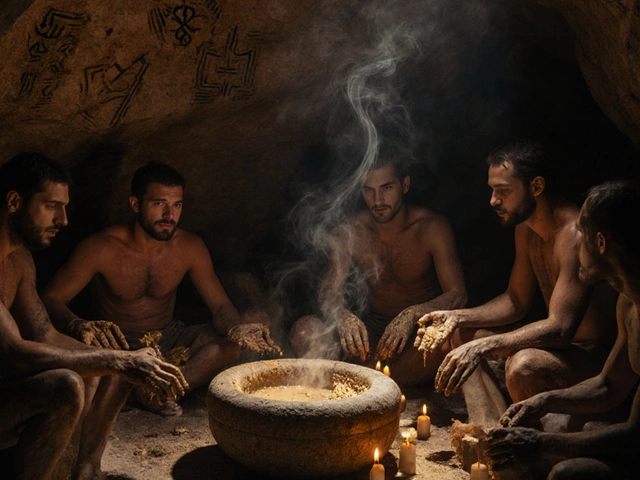If you’re planning a trip for a gin distillery tour, it’s pretty easy to get caught in the Tanqueray versus Bombay debate. These two brands are plastered on almost every bar shelf, but they’re not just about flashy bottles—they each offer a totally different vibe, both in the glass and at their home bases.
Why does it matter? Simple. Not every gin fan cares about the same type of experience. Some want tradition and history, others are chasing sleek visuals or quirky extras. And hey, if you already know you love a bold, juniper-heavy gin or a smooth, floral hit, that’ll steer your decision before you’ve even booked the flight.
If you’re flying all the way to the UK to visit one of these distilleries—because let’s be real, a virtual tour just isn’t the same—you’ll want to know what you’re actually getting. Will you geek out over hundred-year-old copper stills? Or will you fall for high-tech, Instagram-ready displays?
Here’s what you’ll actually see, taste, and do at each spot—and some simple tips so you don’t walk away thinking you missed out or chose the wrong gin. Let’s cut through the marketing noise and get to the facts that matter for anyone who takes their gin (and their weekend getaways) seriously.
- Tanqueray and Bombay: What Sets Them Apart?
- Inside the Distillery Tour Experience
- Taste Test: What Should You Expect?
- Tips for Getting the Most Out of Your Gin Tour
Tanqueray and Bombay: What Sets Them Apart?
You can’t compare Tanqueray and Bombay Sapphire without pointing out how different they really are—not just in taste, but in what they stand for. Tanqueray has been around since 1830, when Charles Tanqueray started mixing his own batches in London. Think classic old-school gin, heavy on the juniper, with that whiff of pine that hits you before your first sip. Tanqueray’s recipe is a secret, but everyone knows the core players: juniper, coriander, angelica root, and a bit of liquorice.
Bombay Sapphire is much younger. It popped up in the 1980s, but it goes hard on branding and innovation. Its big claim? Ten different botanicals, sourced globally—think almonds from Spain, lemon peel from Italy, grains of paradise from West Africa. And it’s not just about what’s in the bottle—the bright blue glass catches the light for a reason.
Distilling methods set them apart too. Tanqueray uses a process called "London dry gin" distillation. It means the botanicals are distilled together, right in the same copper pot stills they’ve used for generations. Bombay takes a different route. They use vapor infusion—the botanicals sit in baskets above the spirit, so the flavors steam up and infuse in a gentler way. You end up with distinct flavors: strong and piney Tanqueray, smooth and balanced Bombay.
These differences aren’t just marketing talk. When you visit the distilleries, you see it everywhere—from the visual style to the types of tastings you get offered. Tanqueray’s birthplace is more about heritage and the essentials; Bombay Sapphire’s Laverstoke Mill tour leans into sustainability, explaining every step of their eco-initiatives and showing off snazzy architecture by the River Test.
Not sure which style is for you? Here’s a quick cheat sheet to sum up each brand’s main vibe:
- Tanqueray: Classic, bold juniper, traditional copper stills, old-school London roots
- Bombay Sapphire: Modern, floral and citrus notes, vapor-infused botanicals, flashier distillery experience
Basically, Tanqueray feels like the comfy leather booth at the back of a pub. Bombay Sapphire is all about bright lights and a cool, modern twist. What you pick comes down to whether you want tradition or something a bit flashier at your gin distillery tour.
Inside the Distillery Tour Experience
The real fun begins when you actually step into the heart of a Tanqueray or Bombay Sapphire distillery. Each offers a totally different atmosphere and set of activities, so it’s smart to know what to expect. Most folks go for the stories, the tastings, and the chance to see those famous gin stills up close.
Tanqueray doesn’t really have a flashy, open-to-the-public mega-tour. The brand distills at Cameronbridge in Fife, Scotland. Because it’s more of a working industrial facility, regular public tours don’t happen. When tours are offered (often by special arrangement or industry invite), it’s very hands-on. You’ll walk right past the historic stills, get face-to-face with the production team, and even see the legendary ‘Old Tom’ copper still they’ve got tucked away. Not exactly touristy—more of a behind-the-scenes, deep-dive into the nuts and bolts of classic gin-making. It’s heavy on the history, and if you’re a proper gin nerd, this is gold.
On the flip side, the Bombay Sapphire distillery at Laverstoke Mill (in Hampshire, England) is made for visitors. It’s open, airy, and built in a glass-wrapped, eco-friendly complex that looks straight out of a movie. Big focus on sustainability here. Guided tours are a staple, and you’ll wander through the iconic glasshouses where they grow botanicals, peek inside interactive exhibits, and see the Carterhead stills in action. There’s even a gin cocktail bar inside, and honestly, it’s a strong contender for the best Instagram spot in the gin world.
- Bombay tours take about 1.5 hours. You’ll get a gin and tonic at the start—and another craft drink at the end if you do the ‘Ultimate Experience.’
- Be sure to check tickets in advance. Bombay’s tours are popular and can sell out, especially on weekends.
- If you’ve got accessibility needs, Bombay’s setup is modern and easy to get around. Tanqueray’s Fife facility isn’t really built for visitors—so consider this if mobility is a concern.
Here’s a simple comparison of the experience between the two for quick reference:
| Tanqueray Distillery | Bombay Sapphire Distillery | |
|---|---|---|
| Location | Cameronbridge, Scotland | Laverstoke Mill, England |
| Open for Public Tours? | Rare, by appointment | Yes, regular tours |
| Tour Focus | Traditional process, history | Modern design, sustainability, interactivity |
| Onsite Tasting Bar | No public bar | Yes, with cocktails |
If you’re looking for a tailored, interactive, and newbie-friendly experience, Bombay Sapphire is easier to access. Tanqueray is more elusive and probably only on your to-do list if you’re serious about gin tours and willing to jump through a few hoops. Either way, both will amp up your appreciation for how these top gins are really made.

Taste Test: What Should You Expect?
Let’s get real about these two big names: Tanqueray and Bombay Sapphire aren’t just different brands—they taste completely different, and you’ll notice it right away in any proper gin tasting session. If you’re used to smashing a gin and tonic down at home, trying them side by side can be eye-opening.
Tanqueray is almost always bolder. Picture walking into a pine forest with a lemon grove nearby. That’s the unmistakable smack of juniper (it actually uses a fairly high percentage), with added coriander, angelica root, and a good punch of licorice. When you sip Tanqueray neat or even with just a splash of tonic, you get a crisp, dry finish. No sweetness, no nonsense. This is the gin for people who like their G&Ts classic and sharp.
Then there’s Bombay Sapphire. It’s way softer, thanks to its vapour-infusion method. That technique allows all the botanicals—think lemon peel, grains of paradise, cubeb berries, and orris root—to come through as light, floral, and a little bit spicy. The first thing most folks say after a sip? It’s smooth. There’s a gentle citrus note but less slap-in-the-face juniper than Tanqueray. For people who want their cocktails to go down easy, Bombay's a fan favourite.
Here’s a quick breakdown table so you can spot the differences at a glance:
| Tasting Point | Tanqueray | Bombay Sapphire |
|---|---|---|
| Main Flavour | Juniper-forward, piney | Floral, citrus, gentle spice |
| Texture | Crisp, dry | Silky, mellow |
| Best For | Classic G&T, martini | Cocktails with a twist, people easing into gin |
| Finish | Short, punchy | Smooth, lingering |
Hot tip: If you ever do a tour, most guides encourage you to try both neat and mixed. Don’t skip the neat tasting, even if you think you’ll hate it—the scents and flavours pop way more, and suddenly, you get what all the fuss is about. And if you’re a bit nerdy about it, notice how Tanqueray works better in dry drinks while Bombay shines when mixed with fruit or floral mixers. That’s no accident; it’s all about the botanical combos and how they’re distilled.
After a session, you might leave with preferences you never expected. Some people even swap allegiances after tasting fresh from the source at the distillery. Tasting them is a totally different game than just picking whichever’s on special at your local bottle-o.
Tips for Getting the Most Out of Your Gin Tour
There’s more to a gin tour than sipping samples—though, honestly, that’s a highlight. Both the Tanqueray and Bombay Sapphire experiences can be hits or misses depending on how you plan. If you want to walk out feeling like you got your money’s worth, there are a few things to keep in mind, no matter which distillery you pick.
- Book ahead—way ahead. Summer and weekends fill up fast, especially at Bombay Sapphire’s Laverstoke Mill. Both distilleries recommend booking at least six weeks in advance if you want your first pick of tour slots.
- Go for the premium tour, if you can swing it. Tanqueray’s tours in Scotland sometimes come with exclusive tastings and behind-the-scenes peeks. Bombay Sapphire’s VIP options get you hands-on cocktail classes or private guides. If you’re making the journey, it’s worth the extra cash.
- Ask questions during tasting sessions. Both brands love showing off their botanicals. At Bombay Sapphire, you can literally crush and smell herbs in their famous glasshouse. Don’t be shy—the more you ask, the more you’ll get out of it.
- Eat something first (or bring snacks). Most tours pour generous samples, and they all end at the bar. Unless you want to leave wobbly, don’t turn up hungry.
- BYO bottle bag. Both shops stock tour-exclusives or distillery-only limited editions. Grabbing a bottle (or two) is a no-brainer, but UK airport security can be strict—bring a travel-safe bag if you’re flying home.
One last thing—Tanqueray is based in Scotland, not London like many assume, so check the address before you book. If you’re keen on quirky, visually-stunning tour spaces, Bombay Sapphire wins with its Laverstoke Mill’s glasshouses—used as a backdrop for everything from music videos to fashion shoots.
Here’s a quick comparison of what you get on a standard visit:
| Distillery | Tour Inclusions | Location | Exclusive Bottles |
|---|---|---|---|
| Tanqueray | History, traditional copper stills, tastings | Cameron Bridge, Scotland | Yes |
| Bombay Sapphire | Glasshouse, hands-on sensory room, tastings | Laverstoke Mill, England | Yes |
You’re not just touring a distillery; you’re stepping into the brand’s story. Pick the vibe that suits you best, prep ahead, and say yes to every tasting offered. You’ll have far more than just a buzz when you head home.


